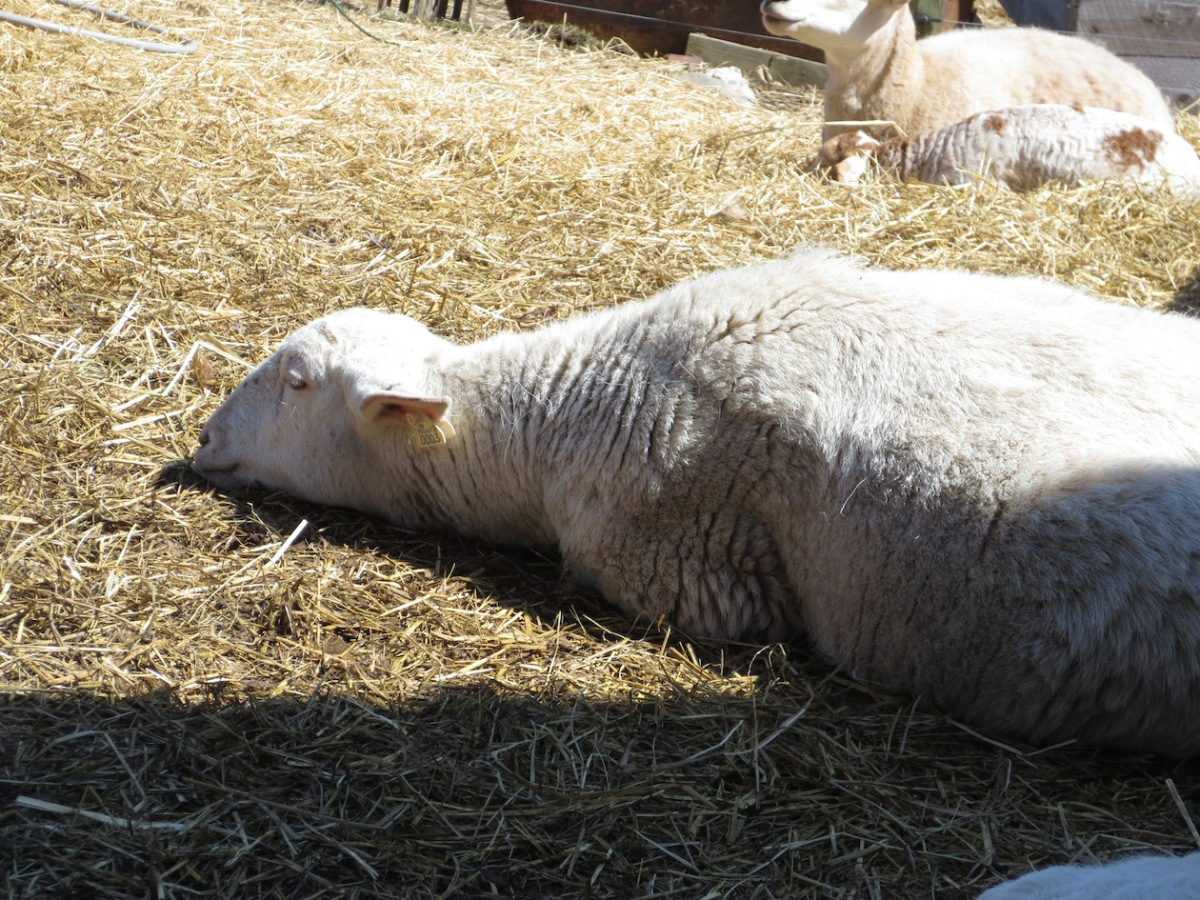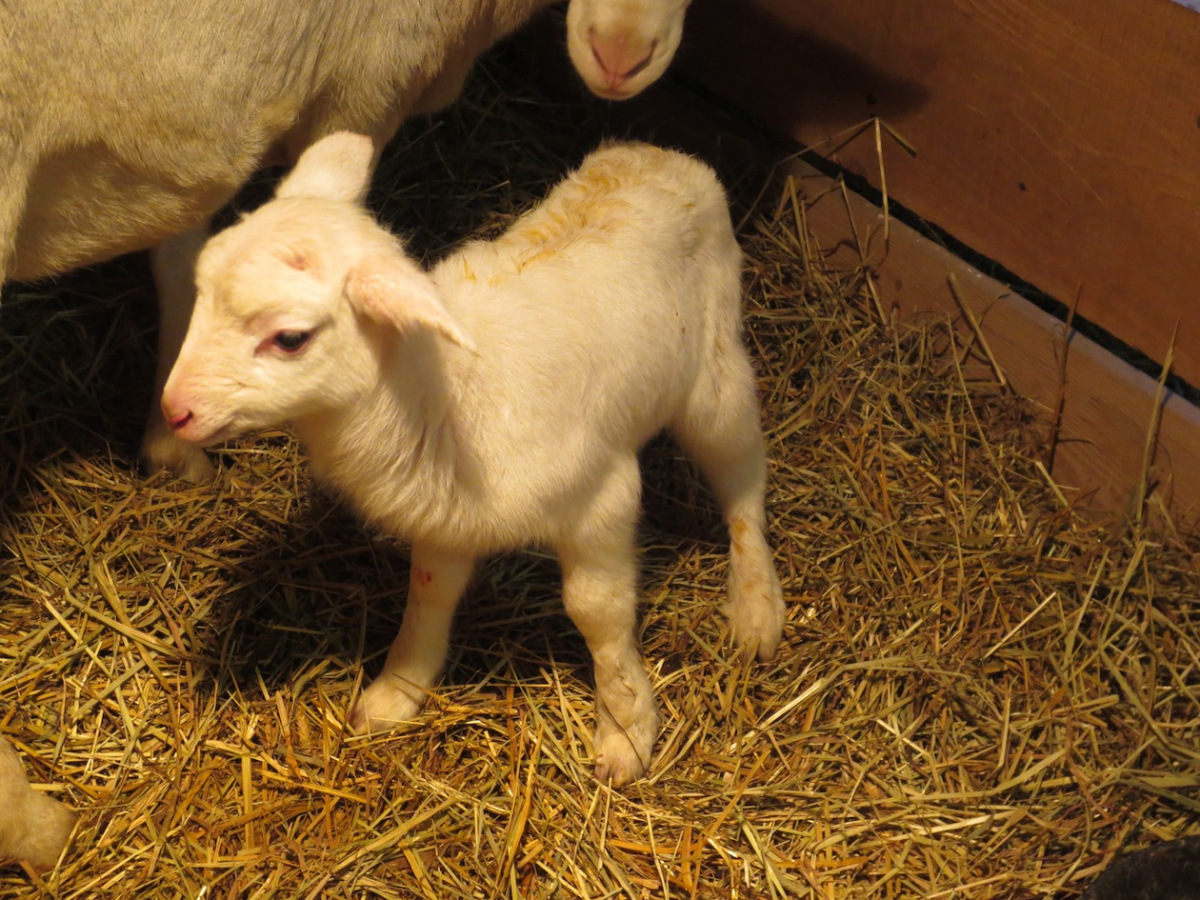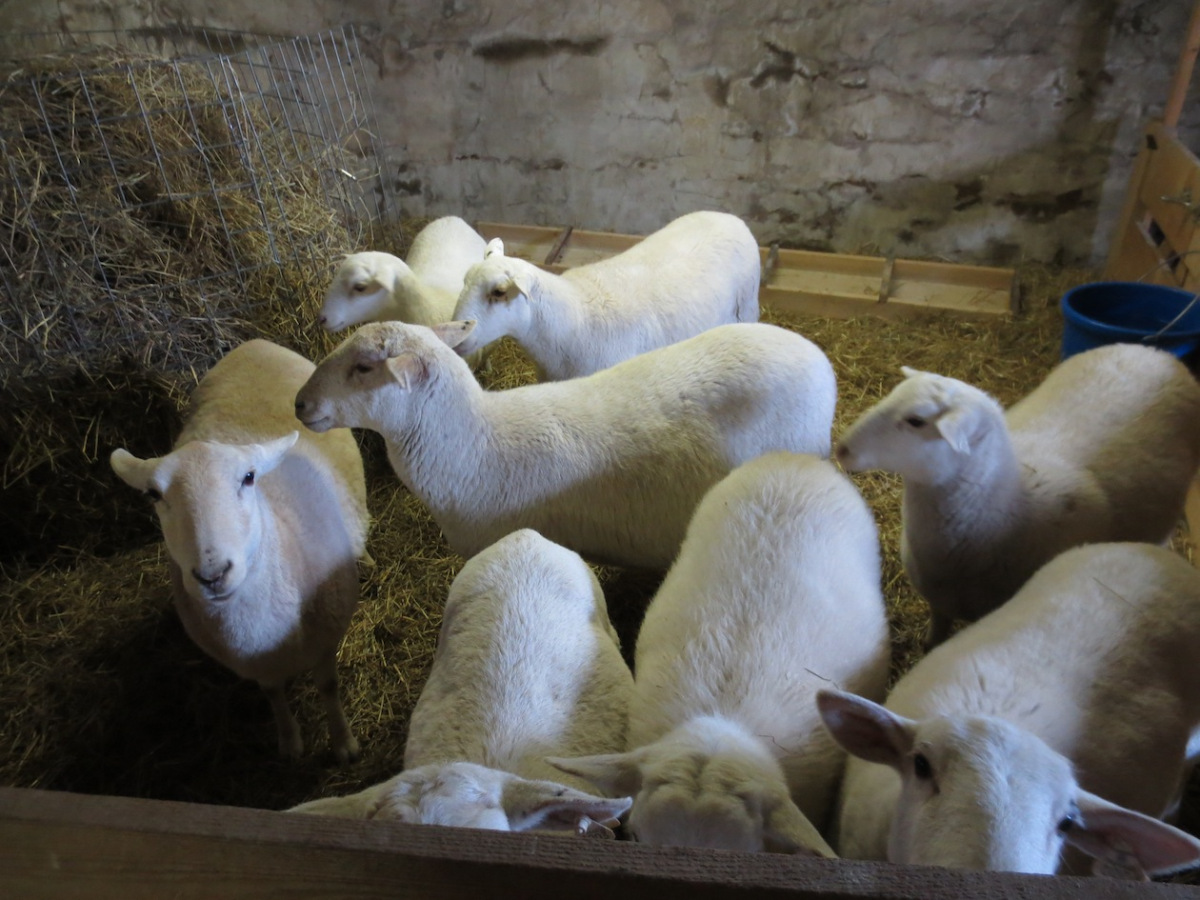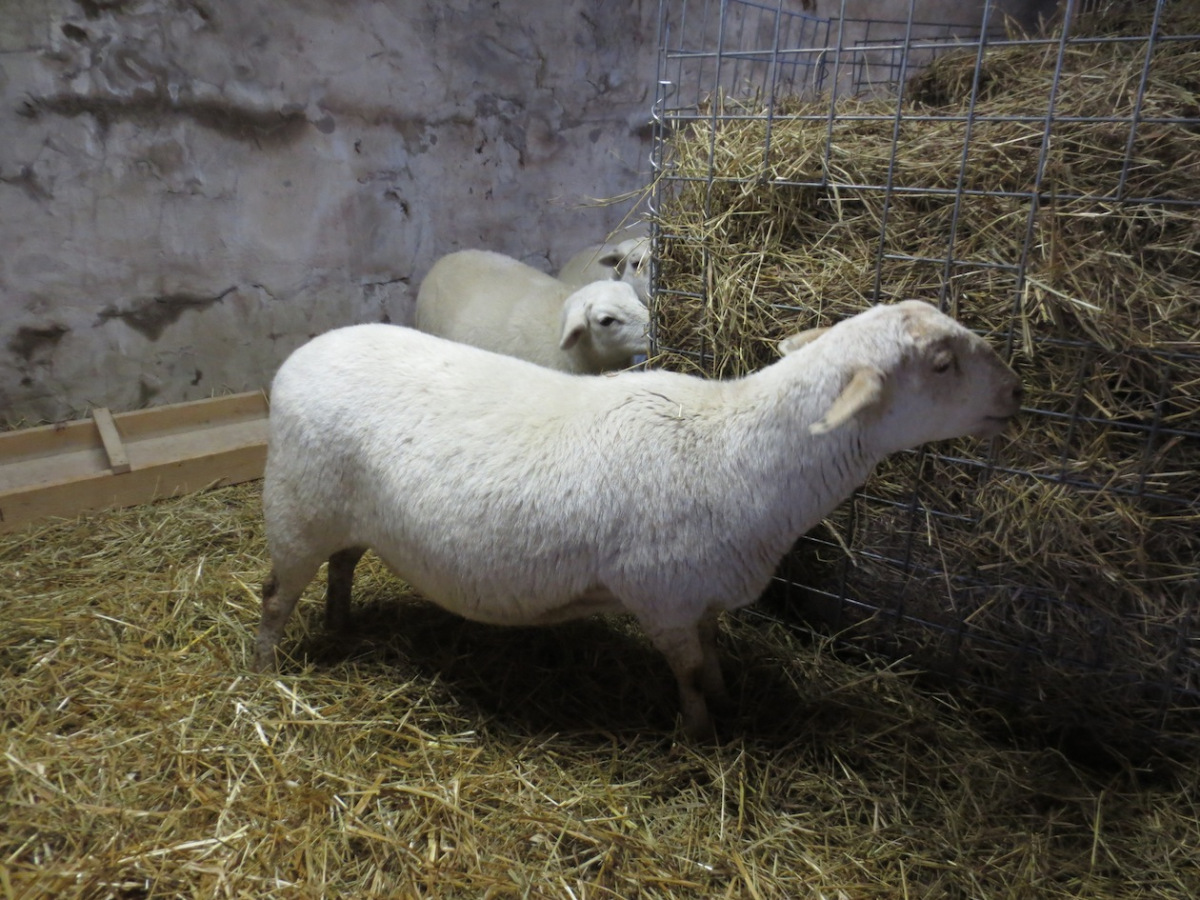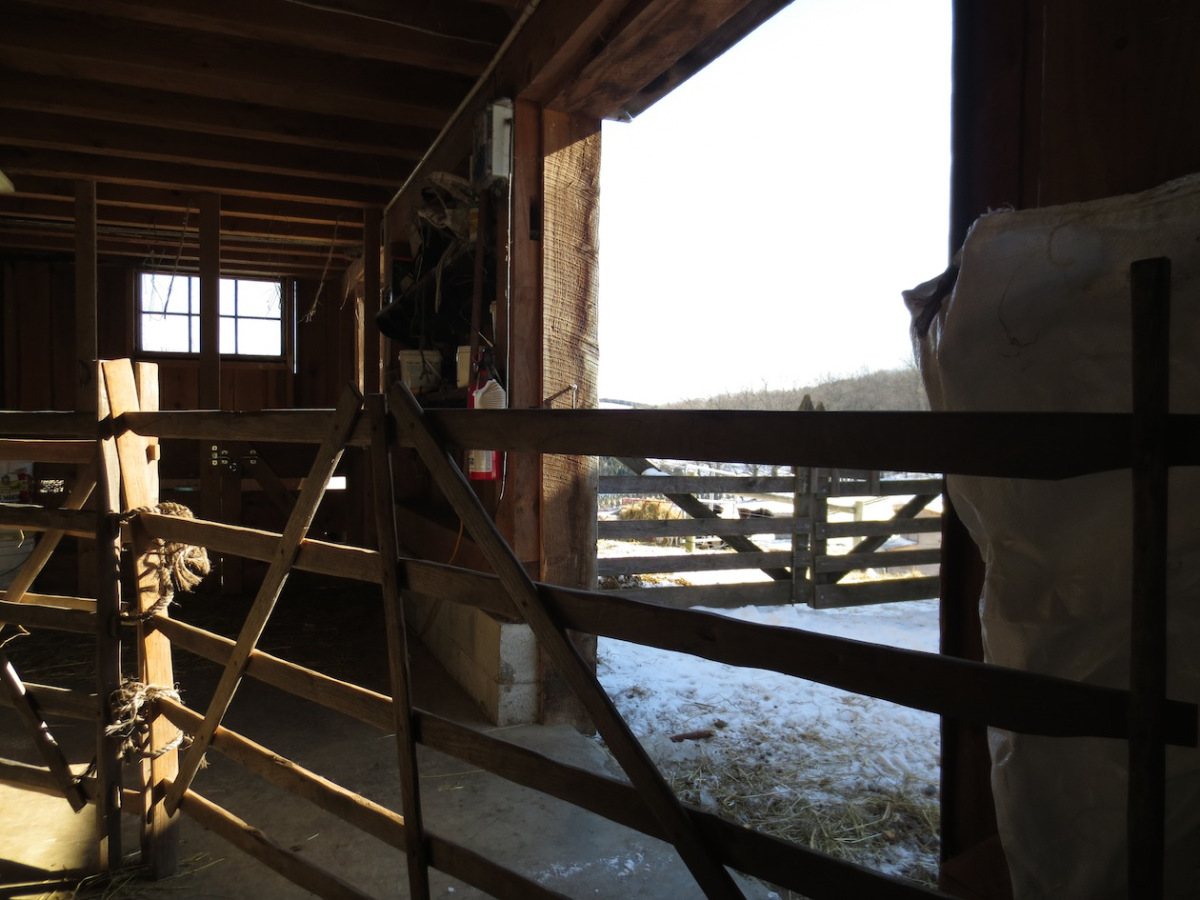The "Wedding sheep" have left the farm and Burgess was left alone in the Bachelor Field. With an eye to lambing in April next year, Burgess' services are not needed until winter so he must remain behind the sturdy fence. As a herd creature, he cannot live alone so I selected a wethered lamb from this year to keep him company. Initially I moved one of Maude's twins in with Burgess but Paxton managed to squeeze through the gate. Mab's lamb is larger and cannot escape so he was my second choice.
The weaning process is unsettling for the flock so I moved the ewes and lambs within the confines of the barnyard. Last night, the second night of separation, I did not hear the sad bleating across the farm. I believe the ewes will go back onto pasture, and behind two strands of electric twine tomorrow.
Burgess likes his pasture companion; his gentle nature is apparent. When I had observed this lamb in the field, he seemed to inherit his ewe's calm nature which will be a welcome addition to the flock during breeding season.
Since the little guy will be on the farm until next year, he will need a name. Since the ewe lambs from this year are Shakespearian, Portia, Beatrice and Hero, maybe Claudio or Antonio would suit.














